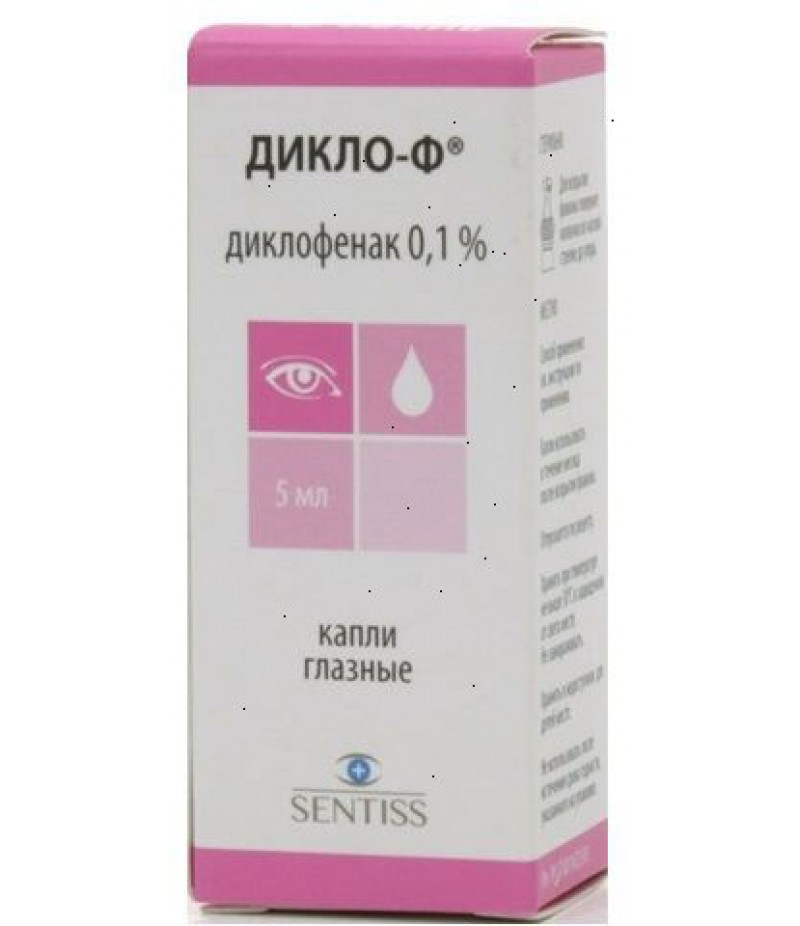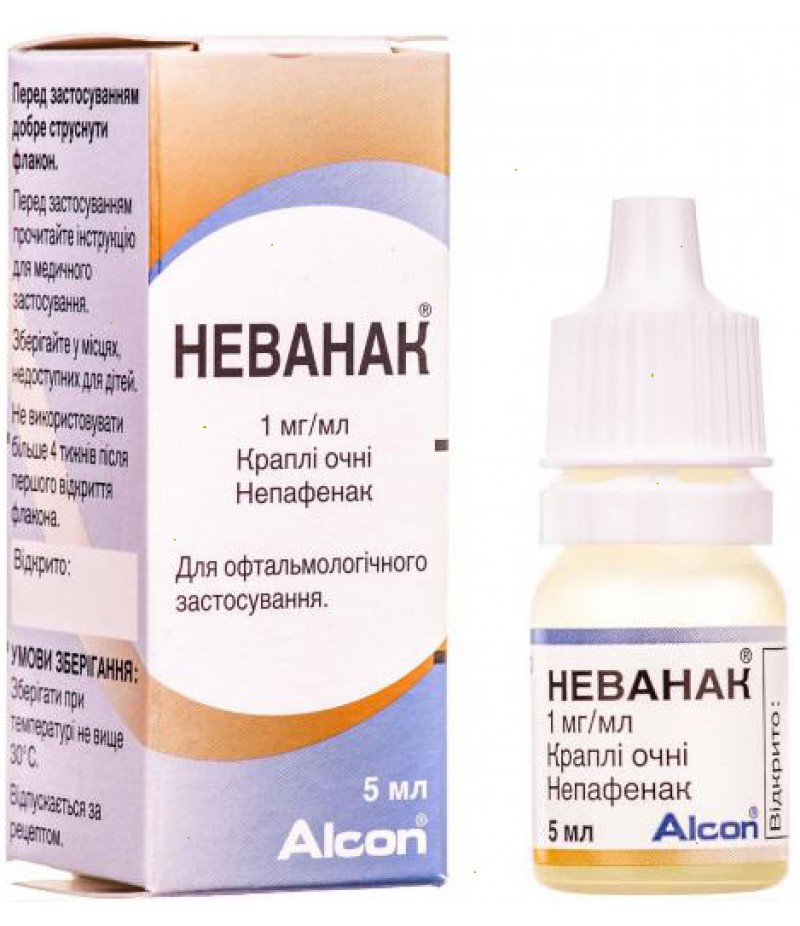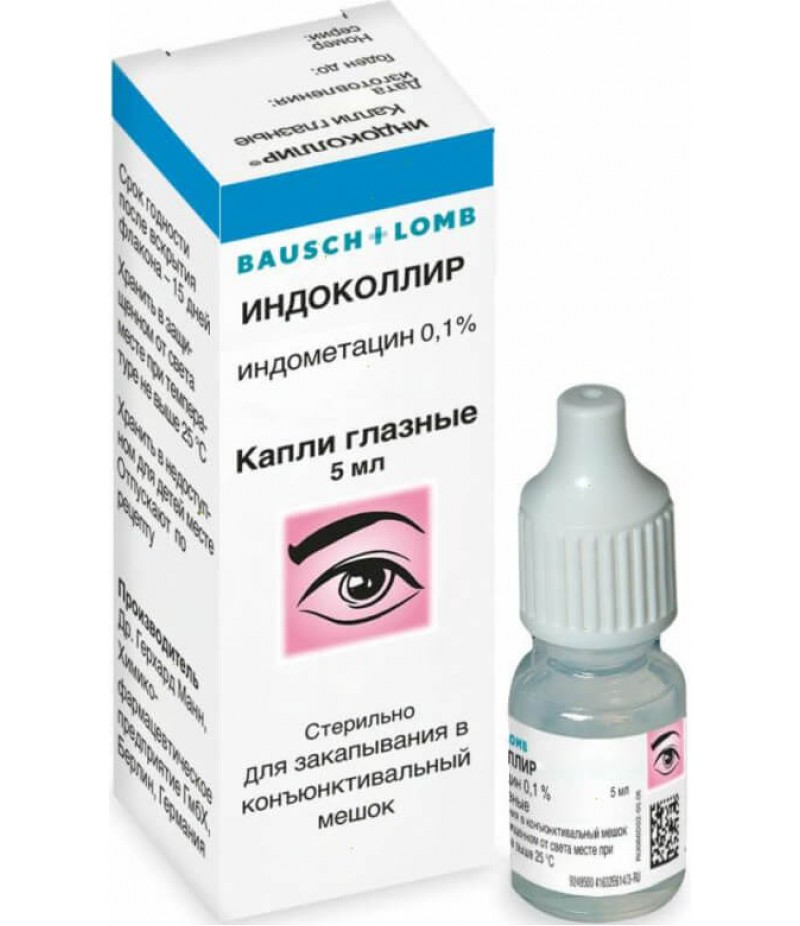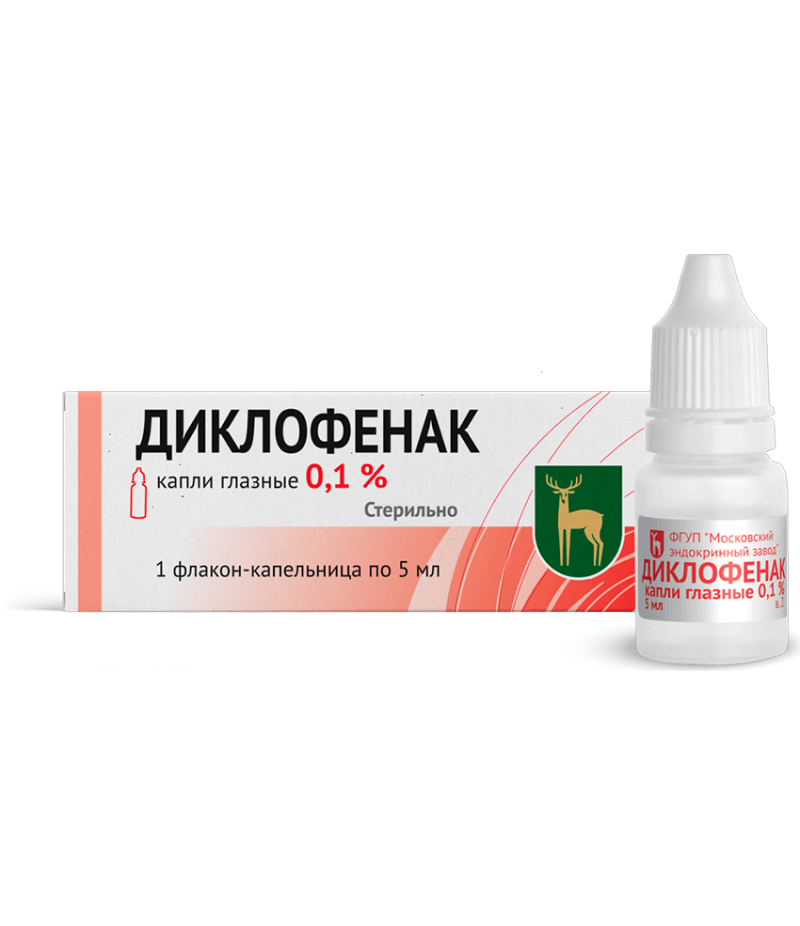Diclo-F drops 0.1% 5ml
- $8.90
- 3 or more $8.75
- Availability:In Stock
Diclo-F instruction for useReed more and buy Diclo-F on this pageComposition 1 ml of the preparationActive substance: diclofenac sodium - 1.0 mg.Excipients: benzalkonium chloride, disodium edetate, bo
Tags: drops
Diclo-F instruction for use
Reed more and buy Diclo-F on this page
Composition 1 ml of the preparation
Active substance: diclofenac sodium - 1.0 mg.
Excipients: benzalkonium chloride, disodium edetate, boric acid, tromethamine, polyoxyl 35, castor oil, water for injection.
Description: clear solution from colorless to light yellow color.
Pharmacotherapeutic group: non-steroidal anti-inflammatory drug (NSAID).
ATX Code: S01BC03
pharmachologic effect of Diclo-F
Pharmacodynamics
Diclofenac has an anti-inflammatory, analgesic and antipyretic effect. The mechanism of action is due to indiscriminate inhibition of cyclooxygenase 1 and 2, which leads to suppression of the synthesis of prostaglandins in the inflammatory focus.
When used as a 0.1% solution of eye drops, diclofenac reduces inflammation of the eyes resulting from infection, trauma, or surgery; reduces miosis during surgical operations, reduces the synthesis of prostaglandins in the moisture of the anterior chamber.
Pharmacokinetics
The drug penetrates well into various tissues of the eye except for the lens Cmax occurs within 30 minutes, the highest concentration is observed in the moisture of the anterior chamber. Systemic absorption is observed. However, the drug concentration achieved in the blood is well below the detection limit and is not clinically relevant.
Indications for use
inhibition of miosis during surgery for cataract;
treatment and prevention of inflammatory processes after surgical interventions on the eyeball;
prevention of cystic edema of the macula after operations for cataracts;
treatment of non-infectious conjunctivitis;
treatment and prevention of post-traumatic inflammatory process with penetrating and non-penetrating injuries of the eyeball (as an addition to local antibiotic therapy).
Contraindications for Diclo-F
hypersensitivity to the active substance of the drug or to any of the auxiliary ingredients that form part of this dosage form of the drug;
hypersensitivity to acetylsalicylic acid or other NSAIDs;
violation of hematopoiesis of unknown origin;
erosive and ulcerative processes in the gastrointestinal tract in the acute stage.
Carefully
Epithelial herpetic keratitis (including in the anamnesis); diseases that cause blood clotting disorders (including hemophilia, prolonged bleeding time, a tendency to bleed); elderly age. There is no data on the use of the drug in children, so use the drug only if the expected benefit exceeds the potential risk.
Pregnancy and lactemia
There are no data on the use of the drug during pregnancy and lactation. With the use of NSAIDs in the III trimester of pregnancy, an increased risk of fetal circulatory disorders may occur. Use in pregnant and lactating mothers is possible only for the purpose of the doctor in charge, if the expected therapeutic effect exceeds the risk of developing possible side effects.
Dosing and Administration
Locally. To inhibit intraoperative miosis, the drug is instilled in the conjunctival sac for 2 hours at intervals of 30 minutes (4 times) before surgery.
To prevent cystic edema of the macula, the drug is instilled 1 drop 3-4 times a day for 2 weeks after the operation.
Other indications: 1 drop 3-4 times a day, depending on the severity of the condition. The course of treatment can last from 1 to 2 weeks.
Side effects of Diclo-F
In rare cases, during the application of the drug, the following undesirable side effects were noted: burning eyes, blurred vision (immediately after instillation); opacity of the cornea (thorns), iritis. Allergic reactions: itching in the eyes, hyperemia, angioedema, edema, fever, chills, photosensitivity, skin rash (mainly erythematous, urticaria), multiforme exudative erythema; nausea, vomiting.
Overdose
There is no evidence of an overdose of the drug.
Interaction Diclo-F with other drugs
It is not recommended simultaneous use Diclo-F with diflunizalom (as possible the development of bleeding from the gastrointestinal tract) and other NSAIDs, including acetylsalicylic acid in large doses (3 g and more per day), drugs sulfonylurea, methotrexate.
Application in conjunction with lithium preparations, digitoxin, indirect anticoagulants leads to an increase in their effect.
If necessary, can be used simultaneously with other eye drops, including those containing glucocorticosteroids. In this case, the break between applications should be at least 5 minutes to prevent the leaching of active substances with subsequent doses.
special instructions
Patients using contact lenses should use the drug
Diclo-F only with the removed lenses and can dress them 15 minutes after instillation of the drug.
After removal of contact lenses, instillation is performed after 5 minutes.
The bottle must be closed after each use. Do not touch the tip of the pipette to the eye.
During the treatment period, it is necessary to refrain from engaging in potentially dangerous activities that require a high concentration of attention and speed of psychomotor reactions.
Form of issue
Eye drops 0.1%.
5 ml in a plastic bottle-dropper with a screw cap. Each vial-dropper along with the instruction for use is placed in a cardboard box.
5 ml in a bottle of dark glass, closed with a rubber stopper, crimped aluminum cap with a safety plastic cap. One glass bottle with a sterile dropper packed in a plastic bag is placed in a cardboard box along with instructions for use.
Shelf life - 2 years. Drops should be used within a month after opening the vial. Do not use after the expiry date printed on the package.
Storage conditions
At a temperature of no higher than 30 C in a dark place. Do not freeze. Keep out of the reach of children.
Conditions of leave from pharmacies
To buy Diclo-F drops the prescription is not required.




